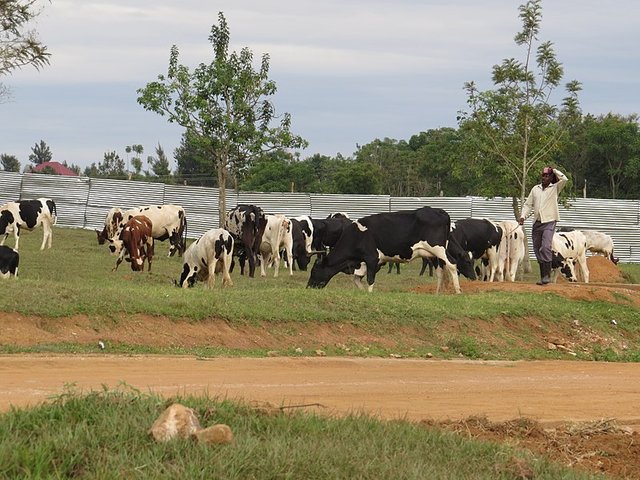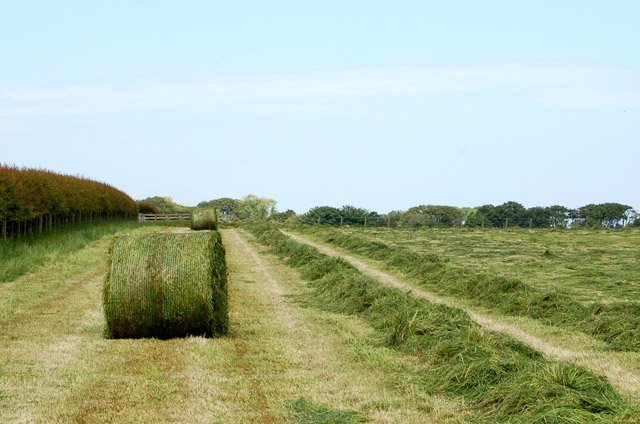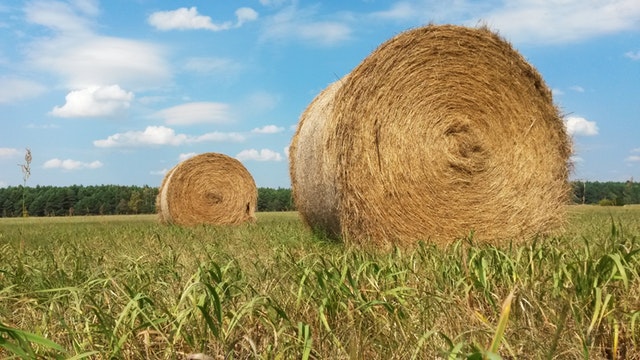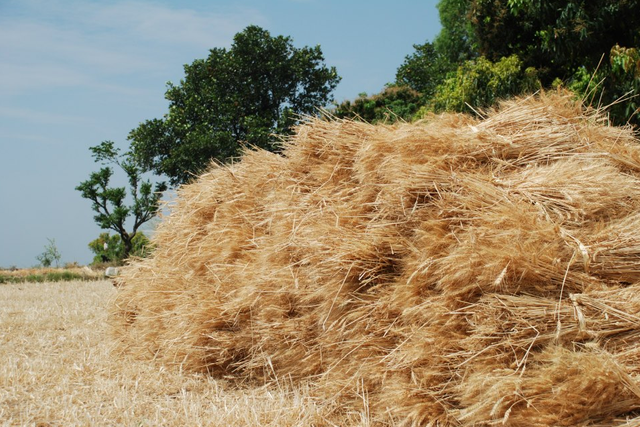Grasses In Our Neighborhood: Beyond being weeds
First, why do these herdsmen need to travel miles to have their herd graze?
A quick review of the vegetation zones in Nigeria:
- The Forest zone
- The Savannah zones and
- The Montane zones
The Forest zone which is characterized by high amount of rainfall, dense forests and trees. The Savannah zones which is further divided into Guinea Savannah, Sahel savannah and Sudan savannah. The Montane zones is found near the coast. It is characterized by sea salt water and is suitable for rice plantation only.
More information about Nigerian vegetation is detailed here
What I was trying to pinpoint from this vegetation is the characteristics portrayed by the “Sahel Savannah”. It is categorized by a very harsh climate due to its closeness to the Sahara desert - hot, sunny and dry. The rainy season lasts less than four months with a very dense population of short grasses. This causes the herdsmen to become Nomadic (move from one place to another in search of grasses for their cows).
What could be done to save this hullabaloo?
Simple, people of the guinea savannah has abundant grasses or green vegetation which is enough to feed tens and thousands of herds. To ensure the safety of crops and avoid trampling of farmlands, the need to conserve grasses is very essential that is why I would be highlighting to us ways of preserving grasses, their differences and other related terms.
Stay with me…

Before I dive completely into the topic, I’d like to familiarize us with the term PASTURE.
WHAT IS PASTURE?
"A pasture can be defined as a vast area/unit of land covered with grasses, legumes or sedges."
If you have an area of land covered with grasses, it can be referred to as pasture. A pasture can be natural if it's untouched by human intervention rather it grew through nature but if you decide to plant different species of your choice then it is referred to as Artificial pasture. Therefore, if you decide to keep a small garden of grasses coupled with legumes for your animal, it can be termed "pasture".
Grasses are found in a pasture either natural or artificial.

Why should we conserve?
- To prevent wastage of excess yield of grasses during the rainy season.
- To preserve the quality of grasses all year round.
- Increase the nutritive value and palatability of grasses.
- Reduce the cost of feeding of the animals and production cost.
- But most importantly, to reduce the competition of livestock with man for staple food.

How can grasses be preserved?
There are different forms to which a grass can be preserved for future reasons, depends on which you find suitable and convenient to produce. Amongst them is:
- Silage
This can be referred to as a fermented fodder which contains a small amount of moisture which has been stored under anaerobic condition. This can be fed to ruminant animals i.e cud-chewing animals. The process of silage making is ensiling and is usually made from crops especially cereal or crops. If a silage is well prepared, it can last for several years without deterioration with a very nice ammonia smell and a pleasant taste (for people who don't mind).

- Hay
Make Hay whilst the sun shines
Hay is an animal feed produced through dehydration of green grass to a moisture content less than or equal to 20 percent -in order to stop activities of plant microbes /enzymes without deterioration of nutrients in the grass species. Different type of grass plant can be used:
- Pennisetum spp.
- Panicum spp.
- Cenchrus spp.
- Cynodon spp. and so on

- Crop Residues
This is the remaining of crop harvests on the field. Such crop could be corn, soybean or other cereal product. It is usually left on the field to dry, they can be subjected to further treatment before it is fed to the animal. All you have to do is, leave them on the field till they are dried then harvest and feed to your animals. But in some cases, you can treat with sodium peroxide to aid digestibility.

STEPS INVOLVED IN SILAGE MAKING
- First and foremost, the silo has to be washed or disinfected before the further process can be carried out.
- Then, you select your favorite or proposed pasture crop.
- Cut the forage/ grass into bits.
- Wilt partially (i.e dry in air ventilation, not a sunny environment) to increase the dry matter of the grass.
- Crush the stem to assist faster drying.
- Pack the forage into silo (A silo is a place where silages are stored).
Note that:
While packing the forage into the silo, you have to be fast to ensure no air space within the stacked silage.
- Compact the silage material and ensure there is no airspace
- Seal off the silo.
This prevents air from entering.
A silage also has to be properly covered again rain because this can lead to the formation of bacteria mold.

PROCESSES INVOLVED IN HAY MAKING
- Just like Silage, selecting a suitable plant material to reach your goal is very important. These grasses can be found in abundance but they vary in nutrient capacities.
- The best time to cut the material is during flowering (the plants are nutritious and very succulent)
- Afterward, it is advisable to crush manually using any material you found suitable. But make sure that material won't bring in external particles such as wood, sand and so on. It is very important to crush the stems so that the grass can dry faster as we know that leaves contain lesser amount of water compared to stems.
- After the stem has been crushed, the next step is to dry. This step is very crucial to hay making because, if the stems are not properly dried. There would be bacterial manifestation during the rainy season and this can be harmful to the animals when ingested.
- Racking or bailing is also important. The dried forage/grass will be packed compactly to conserve space.


HOW TO KNOW IF YOUR HAY/SILAGE IS GOOD.
- Good hay will have an ammonia smell which indicates it is high quality.
- Very palatable to the animal.
- Should not be moldy (no bacteria mold)

DIFFERENCE BETWEEN SILAGE AND HAY
| Silage | Hay |
|---|---|
| involves fermentation | involves dehydration |
| Moisture level is 35% | moisture level is <20% |
| is done in the rainy season | is carried out in the dry season |
I feel the problem is not as hard as the solution I just highlighted. If grasses can be conserved when they are green and fresh they can last for three years and more without deteriorating provided they were well conserved. I’d be dropping more posts on agriculture particularly pasture and the little things we pay attention to. Thank you for stopping by
References
- Dr. Olanite Jimoh Alao. "Forage quality and conservation Lecture note". Federal University of Agriculture Abeokuta
- Silage
- Hay
- Agrifarming
- Naij.com
The tag is wafrica.
It's possible to keep a grass green for over three years, I never knew that.
Nice one bro.
I never knew too..... Let's call Buhari
lol, thanks for dropping by.
I hope to catch your attention more often... Don't forget to "Do Agric, it pays"
Noted
okay boss, will adjust that.
Yeah, very possible as long as you preserve it well.
Thanks for your time @addempsea
Same for me ^^
@lemouth thanks for stopping by... I do appreciate
My pleasure :)
Quite a good post. I hope this gets to the president and people who could help us annihilate the unfortunate herdsmen situation.
Nice effort. Do join the Steemstem discord server and try to visit the #stemng and #steemstem tag frequently to engage other author and most importantly learn!
Have a nice time here. Looking forward to more posts from you.
Noted @mrbreeziewrites
Nice diggings on this post.. I love the contents and the point.
But is it possible for the herds men and farmers to be friends because cow for example will need some farm feeds(grass) to fed on which might prompt them damaging some crops planted.. How can one bridge that?
Of course Sir. Bridging the gap is the reason this research was carried out in the first place. Ruminant animals, cattle/cow for instance prefer succulent pasture/fodder. They graze mostly on grasses (because it is an energy source) and legumes (protein source for them).
So, if we could store/preserve an high amount of grasses e.g Panicum maximum, Pennisetum purpureum_ and many more which is naturally abundant on our farmlands, the animal takes it in if the conditions highlighted above is met.
Which means there wont be anything like herdsmen?
Since the food is stored and preserved.. So i think wandering around with cattles/ cows won't be necessary... I'm i right??? (laughs)
@adeosunadeyinka well, herdsmenship cannot be completely erased because
I think the government really needs to see this. It's a simple way to settle all the crisis involving the herds men and farmers.
@temitayo-pelumi it's such a simple solution afterall. Hope this post get to impact lives. I'm glad you stopped by, kindly resteem.
Thanks Sir
So we can preserve grass. Interesting. Nice content bro
Thanks for stopping by Sir. Of course we can! @ibk-gabriel
Good work here, you may need help on markdown for your images. Consider joining the steemstem on discord here.
From above, I'm a little bit confused, do people eat silage?
@greenrun There's a particular tribe in Nigeria that eats _Pennisetum purpureum_and this grass can also be used as silage. I don't think it'd be hard for such people to taste.
That's enlightening. Thank you.
Very good job you've done here. The herdsmen are certainly fighting their greatest allies, it's a pity what ignorance can lead you to.
Posts like this highlight the importance of fields of study like Pasture and Rangeland Management. A discipline many youth are glad to run away from. What a pity.
I'll be here for your subsequent posts, I'll love to know more about grasses.
@sogless I appreciate you Sir. Thanks for dropping by.
Awesome post!! Keep it up and check out THIS POST as well as I have something similar.
Like for real??.. The grasses would still be green? 😱
even if our government adopts this, let's hope our illiterate herds men would make use of this.
@adetola The herdsmen might likely adopt if good extension agents relate with them. It is even more easier when they become friends rather than forcefully enacting the rule.
Yes.. That is true
@adetola I believe if the right channel is followed, it is possible.
Government should enact this, they should be made to understand
Good one here...
Conservation is key!
@olajidekehinde I believe it is... Thanks for stopping by.